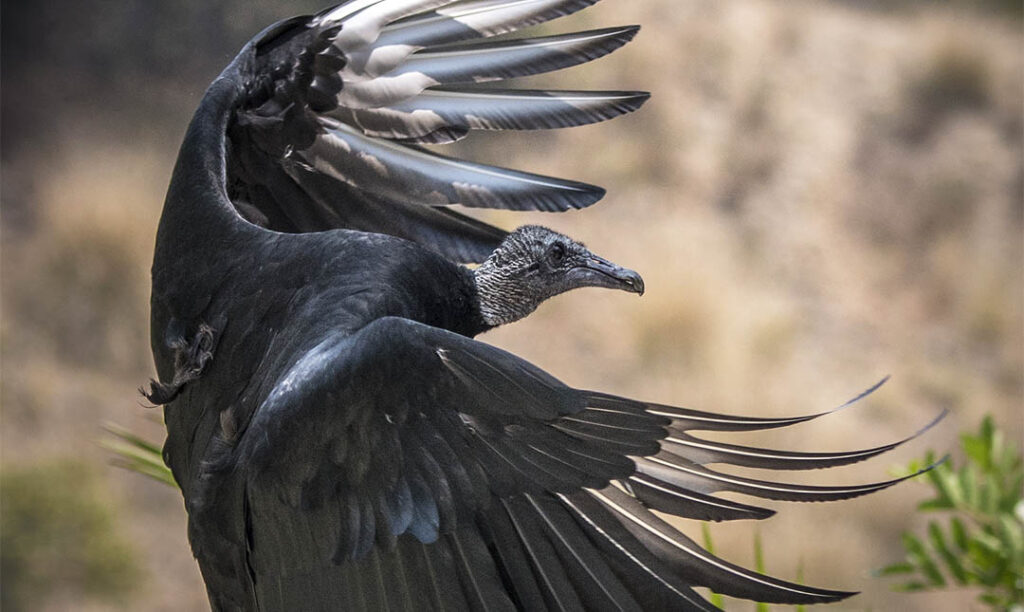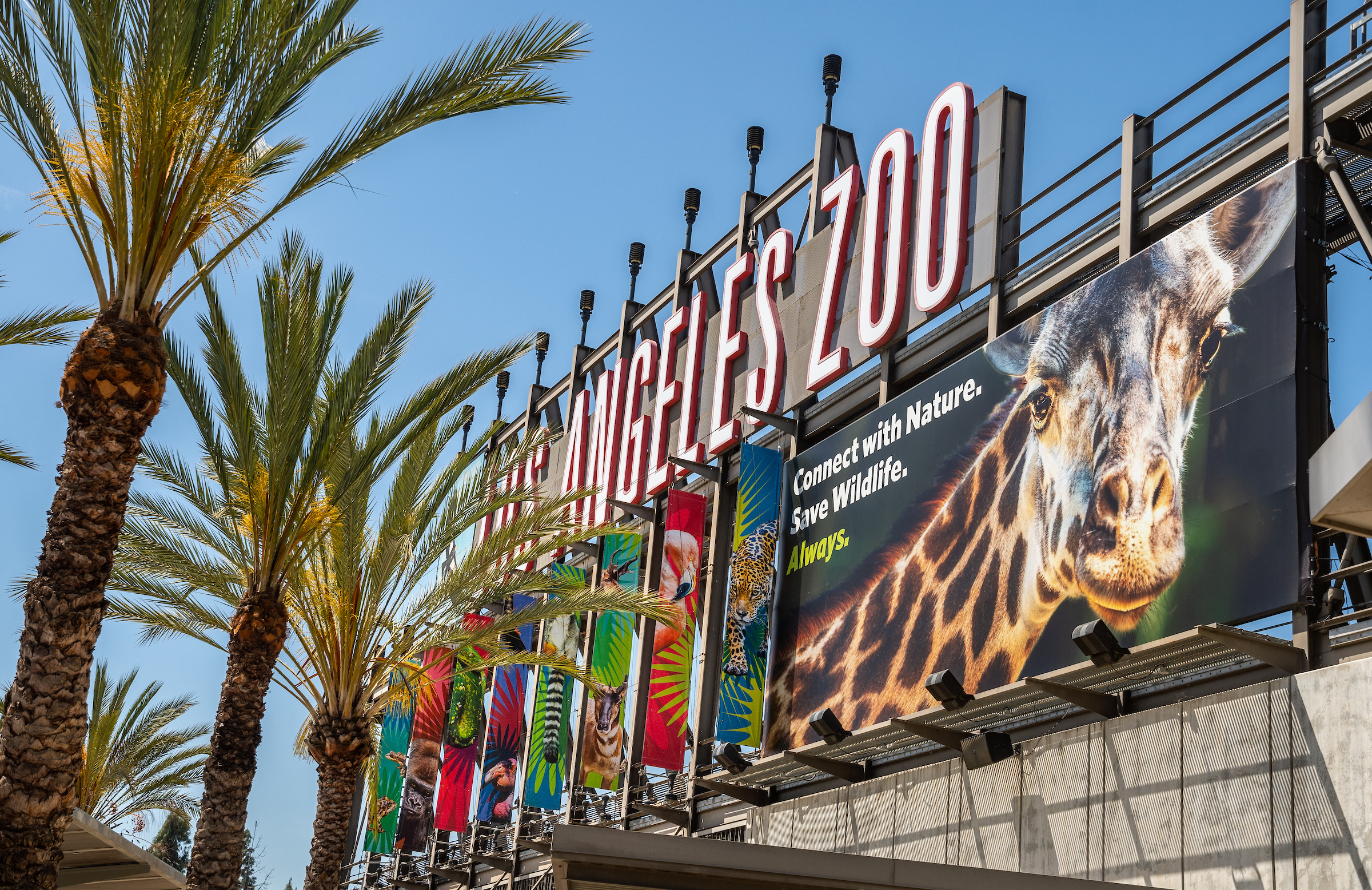
In honor of International Vulture Awareness Day (IVAD) on the first Saturday in September, we’re celebrating these charismatic and often misunderstood birds all month long. If you missed our IVAD posts on social media, you’ll find links to them below, at the end of this article written by GLAZA Docent Bill Mandel. Bill helped spearhead the first IVAD celebration at the Zoo in 2017, along with fellow members of the Zoo’s Conservation Committee. Following the article, you’ll find other vulture-related resources to explore. –Zooscape Editor
International Vulture Awareness Day (IVAD) began in South Africa and the United Kingdom on September 5, 2009, with a goal of raising awareness of the dwindling number of vultures and the vital role these carrion eaters play in the health of their ecosystem and environment.
In recent decades, Asian vulture populations in Southeast Asia and India have suffered huge population crashes, with declines ranging up to 99 percent. It was discovered that vultures were experiencing renal failure, visceral gout, and eventual death due to the secondary poisoning of Diclofenac, a non-steroidal anti-inflammatory drug given to treat livestock. Diclofenac has since been banned in southern Asia but is still being purchased on the black market and has recently been vet-approved in Europe.
African vulture numbers have also been decimated by secondary and primary poisoning. Farmers and pastoralists set poison bait traps for large predators such as lions, leopards, hyenas, and painted dogs to prevent attacks on livestock. Vultures eat the poisoned bait or the predators that die of poisoning and are themselves poisoned. Poachers also poison the carcasses of the animals that they have killed for ivory or horn so that vultures who feed on the carcasses will also die – and thus not reveal the location of the carcasses to law enforcement. In total, 61 percent of the vulture deaths in Africa that are caused by humans are due to poisoning. Most of Africa’s vultures are now listed as Endangered or Critically Endangered.
The Los Angeles Zoo supports vulture conservation efforts in a multifaceted approach. From the vultures in our care, to the communities we engage, the field work we support, and the expertise we contribute, we are deeply committed to saving species. The California Condor Recovery Program (CCRP), a conservation success story, is a great example of this in action. The L.A. Zoo is a founding member of the CCRP, partnering with organizations such as the U.S. Fish and Wildlife Service. Our collective goal is to reestablish California condors in the wild. We have seen population numbers rise from 27 in 1987 to over 500 today, with more than half living in the wild. The Zoo is also a member of the Association of Zoo’s and Aquariums’ Saving Animals From Extinction (SAFE) African Vulture program. The goal of this program is to improve populations of target vulture species throughout their African distribution, to which the Zoo has provided leadership and capacity building support. To find out more about AZA’s SAFE program, visit their website at www.aza.org/aza-safe.
IVAD has become an annual celebration occurring on the first Saturday in September each year. In 2021, we celebrated on September 4 on social media—where we spotlighted Cape vultures and World of Birds Show stars Thelma and Louise on Facebook, Instagram, and Twitter; Morticia the striking black vulture on Facebook, Instagram, and Twitter; and guest favorite Leadbottom the Andean condor on Facebook, Instagram, and Twitter. We also created a “What Vulture Are You?“ quiz. Take it yourself at this link!
Whether celebrating IVAD in-person or virtually, the Zoo’s staff and volunteers always enjoy highlighting to our communities the importance of vultures and existing conservation efforts.
Learn More
- “Turkey Vultures in an Urban Environment”—Join L.A. Zoo Animal Care specialist Katie as she discusses the adaptable and often misunderstood turkey vulture.
- “Vulture VIP: Dolly the Ambassador California Condor”—Get up-close views of Dolly, the nation’s very first California condor ambassador, with L.A. Zoo Animal Keeper Debbie Sears, who discusses Dolly’s role in the conservation of this critically endangered species.
- “L.A. Zoo Keeper Travels to Europe to Study Vultures”—Travel along with Senior Condor Keeper Chandra David on her trip to Europe to participate in the Annual Bearded Vulture Conference. Her journey was made possible by a grant from the Los Angeles Zoo’s Ornato Animal Keeper Advanced Studies Fund.
- “L.A. Zoo Conservation Strategic Plan Keynote Presentation”—The iconic California condor would not exist today without the species-saving work of the L.A. Zoo and our partners in the California Condor Recovery Program. With the launch of the Zoo’s first-ever Conservation Strategic Plan (CSP), we’re expanding our already robust efforts to protect species and the habitats we share by focusing on six key areas, strengthening our partnerships, and engaging our diverse communities. Join us in creating a just and sustainable world where people and wildlife thrive, together.

